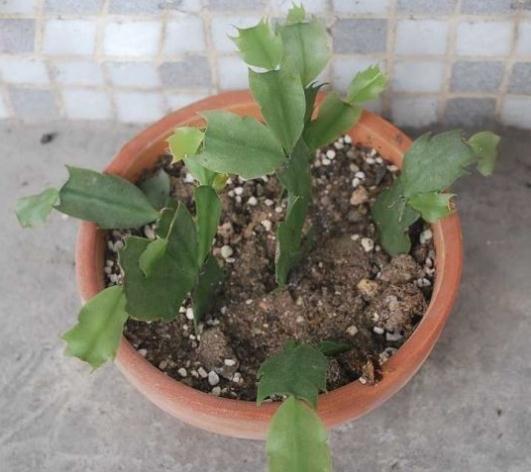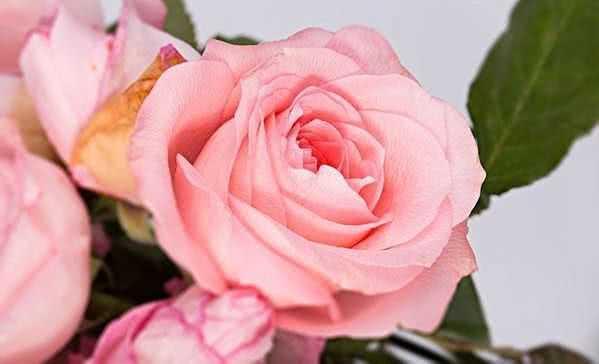Don't ignore these three principles of growing flowers in autumn. Get rid of yellow leaves, rotten roots and fallen flowers easily.

In recent days, after a baptism of torrential rain, the weather has gradually become cooler, which means that summer is over. At this time, it is also the best growing season for potted flowers. No matter what kind of flowers, they always grow vigorously in spring and autumn. But in autumn, we should also pay attention to several problems. After all, the growth characteristics of flowers are changeable, especially in the alternation of summer and autumn. When you grow flowers after autumn, don't ignore the "three" principles mentioned below, so that you can easily get rid of the problems of yellow leaves, rotten roots and fallen flowers. What are the three principles? Keep looking down!
The first principle: do not apply "thick fertilizer" to flowers, and do not apply more "nitrogen fertilizer".
Although autumn is the peak growing season for flowers, we should pay more attention to fertilization. After all, once the thick fertilizer is applied to the flowerpot, even if the flower stems and leaves need more nutrients, it will not only cause soil consolidation, but also burn the plant roots because of the heat emitted by the fertilizer. "thin fertilizer and diligent application" has always been a principle that must be followed in flower cultivation. In addition, nitrogen fertilizer should not be applied too much from August to October. This is because although nitrogen fertilizer can promote the green and thick leaves of flowers, too much nitrogen will lead to excessive growth of leaves and affect flowering.
The second principle: find that the branches of flowers are growing badly, and prune them in time.
Like common jasmine, gardenia, crab claw orchid, longevity flowers and other flowers, if not pruned, the whole potted plant will be very ugly, the ornamental value will be greatly reduced. In addition, if some extra branches are not cut off, it will also affect the gestation of Huaguo. When pruning, pay attention to the use of scissors, do not pinch casually with your hands, otherwise improper handling, will also lead to branches withered. After pruning, flowers should not be placed in the sun immediately. It is best to put them in a cool and ventilated place for 2-3 days to observe whether there is any abnormal condition. Use simply cut branches, do not waste, some can be directly used for cutting. And autumn, it is a good time for cutting, cutting a pot more than a pot, even to save money.
The third principle: most common flowers should be "changed" to change soil in autumn.
The space for the growth of flowers is all in that small flowerpot, and for some exuberant flowers, the roots are soon filled with pots. Over time, there is not enough room for root growth, and even the soil in the flowerpot can be absorbed. If the pot is not changed at this time, it will not only affect the root system, lead to yellow leaves, but also affect flowering. Autumn is a good time to change the basin and soil, when the climate is humid and the temperature is appropriate, the effect of changing the basin and soil is not great. For example, the common orchids such as hanging orchids, gentleman orchids and cymbidium, as well as green apples and money trees, should be changed as soon as possible, at least once or twice a year.
This is the end of the knowledge about growing flowers in autumn. Thank you for reading!
Remember to like and share.
- Prev

These five things in the family must be thrown away and kept will only be a waste of money and not worth it.
Every item in our home has its own service life, such as toothbrushes every three months, towels every 2-4 months, and pillows, about once a year. Today, Huahua wants to talk to you about home.
- Next

Roses are just for viewing? What you can eat and take a bath is something you can't imagine.
It is now popular to give roses to girls on Valentine's Day. Today happens to be the roses in Qixi Festival's florist. The roses in the florist must be very popular. The boys have almost crushed the door of the florist in order to buy beautiful roses.
Related
- Wuhan Hospital Iron Tree Blooming Result Was Instantly Frightened by the Gardener Master
- Which variety of camellia is the most fragrant and best? Which one do you like best?
- What is the small blue coat, the breeding methods and matters needing attention of the succulent plant
- Dormancy time and maintenance management of succulent plants during dormancy
- Minas succulent how to raise, Minas succulent plant pictures
- What are the varieties of winter succulent plants
- How to raise succulent plants in twelve rolls? let's take a look at some experience of breeding twelve rolls.
- Attention should be paid to water control for succulent plants during dormant period (winter and summer)
- Watering experience of twelve rolls of succulent plants
- Techniques for fertilizing succulent plants. An article will let you know how to fertilize succulent plants.

